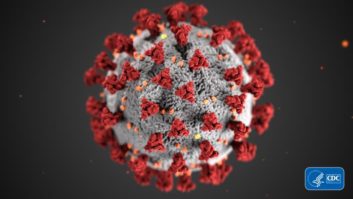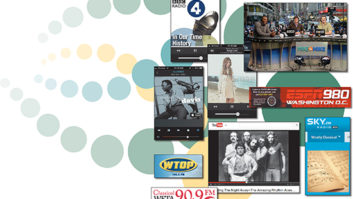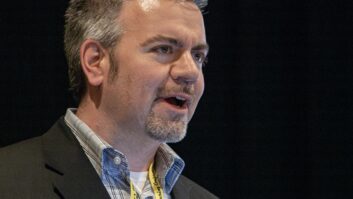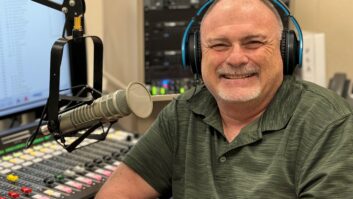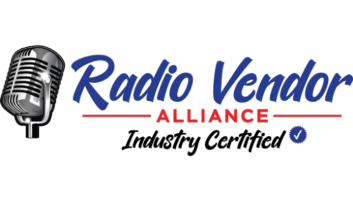Station Chooses D.A.V.I.D. System to Handle Burgeoning Content Demands
For a year now, WAMU(FM) in Washington has been running a networked audio automation system supplied by D.A.V.I.D., a German company seeking a stronger foothold in the U.S. market.
The project gives insight into the design philosophies of the supplier; it also typifies how the goals of a modern, big-city radio station continue to evolve.
Director of Engineering John Holt, at any rate, is clear about WAMU’s mission: “We’re content providers.”
Sitting in the meeting room/cafeteria at WAMU – near a pledge board filled with scribbled numbers and with on-air host Diane Rehm sticking her head into the room occasionally for coffee – Holt ticked off the various ways WAMU now produces audio and data information.
These channels include over-the-air analog, RDS text, over-the-air HD Radio and a supplemental multicast, online streaming of station programming, online archived content and a separate Web bluegrass channel. It has just added podcasts.
Its audio management system has to handle all of that.
Open interfaces
WAMU – “Your NPR News Station in the Nation’s Capital” – is licensed to American University; it serves 576,000 listeners in the District of Columbia, Maryland and Virginia. Staffed by paid employees, it carries networked programming from NPR, PRI and BBC as well as local shows. It’s home to hosts Diane Rehm – who reaches 1.4 million listeners a week through NPR and Sirius distribution, as well as WAMU itself – and Kojo Nnamdi.
As we reported earlier, the station added HD Radio in the spring of 2004 and was one of the first to activate a multicast channel. It used WAMU-2 to air NPR coverage of the Supreme Court confirmation hearings for John Roberts.
Holt said the station shopped for eight years to find the right platform to manage its mix of offerings before choosing D.A.V.I.D.
The supplier was founded in Munich in 1991, selling a digital storage system for news content called DigAS and a networked audio editor, EdigAS. (The names are based on amalgams of German words.) The product name changed to DigaSystem five years ago “to emphasize the system character and to internationalize the brand,” according to its literature, and the company expanded its scope to include production, content exchange and on-air functions as well as news.
In the United States and Canada, the company refers to its solutions simply as D.A.V.I.D. Systems.
The firm has made its U.S. mark mostly in public and government broadcasting; clients include WETA(FM) in Washington; WNYC(AM/FM) NewYork; WNPR(FM) in Connecticut; Marketplace Productions, which is now part of MPR; Oregon Public Broadcasting; the U.S. Department of Agriculture; and Radio Free Europe/Radio Liberty, its largest U.S. installation.
To serve North American clients, the supplier has an office of four employees in Rosslyn, Va., outside of Washington, run by President Richard Doll.
D.A.V.I.D. emphasizes the use of open interfaces that work in various system environments. It says systems can range from single-journalist workstations to designs that handle recording, storing, editing, managing and broadcasting audio. Globally, it has approximately 10,000 “seats,” or user positions.
The line is based on standard PC hardware. Database functions are based on SQL and ODBC standards. The systems can operate with a variety of audio formats. Most systems are operating at linear 44.1 kHz, 16-bit stereo or MPEG Layer II standard with MusiFile and BWF formats. They can be configured for linear 96 kHz, 24-bit, stereo WAV audio, as well as hybrid formats, MP3, Windows Media and RealAudio. A recent addition is support for the Suround Sound format RF64.
What WAMU initially purchased was a Latitude Edition system, but the package has since grown into a full DigaSystem setup.
Latitude Edition was introduced in 2004 to appeal to U.S. broadcasters, who tend to be smaller and more economy-minded than D.A.V.I.D.’s European clients. A base package retails for $35,000 and includes three workstations, a file/audio server with 2,000 hours of music in MP2, three flat-panel monitors, soundcards, a network switch and training.
The supplier emphasizes the system’s ability to adjust to workflows and its scalable operating environment. It says the modular design can grow like a box of Lego bricks – as it has done at WAMU.
Phased in
“It’s never completed,” Holt said. The station goals have evolved thanks to digital radio and data-handling needs. WAMU now has 15 Database Managers, four on-air studios and a separate playout system for BluegrassCountry.org; a third system is coming to handle the station’s multicasting feeds.
The station chose to implement the system slowly.
(click thumbnail)A scheduler screenshot. The right pane shows the audio schedule on top and PAD schedule at the bottom.
“First we just had people playing with it,” Holt said. “Then we began readying long-form NPR programming; then news pieces submitted via the Web interface; then we began managing underwriting announcements and promotions.” The station has about 50 employees; perhaps 25 of them use the system.
Richard Doll of D.A.V.I.D. said that at WAMU, a phased-in launch was more productive than a hard switchover. “One of the things we learned is that a turnkey system can be installed, but individual operators must ask their own questions and get a response to them rather than just getting their five-day training,” he said.
WAMU employs two major interfaces, according to Fridolin Mueller, vice president for system solutions at D.A.V.I.D. One interface handles content management, including station audio, archiving and Web audio. Another handles the recording of content ingested from network feeds. The station has also been testing the ContentDepot interface. Existing workstations running Adobe Audition or Vegas can contribute audio using the Content Bridge module.
The installation uses linear audio, with 600 GB of main storage, which is mirrored. Backup is a big part of Holt’s thinking; he is planning one or more backups off-site, acknowledging that a facility problem is a possibility given the location in the nation’s capital.
Systems can mirror each other, so WAMU is talking to at least one other D.A.V.I.D. user in the area about supporting each other as mutual backups.
A bridge
Any control room can go on the air, a feature that was important to Holt. The system allows a user in one room to do audio trimming for production while another studio is still airing the source audio.
Another selling point was that the station could continue to use its Vegas or Cool Edit editors, as well as the Latitude Edition editing module.
“WAMU had an investment in certain digital and editing systems,” Doll said. “The goal was not to build another ‘island’ but a system that lets them bridge various islands.”
The system can drag and drop multiple file formats and handle multitasking. “All these changes can be done on the fly,” Doll said. “A hierarchical user system lets people make changes to the last second that are immediately visible across the environment. There are no operational limitations to how close to air things can be changed.”
The multipurposing of content is a big part of WAMU’s activities. Once a given piece is produced, said Doll, “all these avenues are automated” – users need only check off items on a command screen to tell the system where the content needs to go.
“Web producers from other stations are stunned when they find out that zero staff time is spent in creating and encoding Web material,” Holt said.
“We’ve started implementing the end-to-end PAD workflow here,” said Mueller. “HD Radio, RDS, feeding back to the Web. So in addition to the audio schedule, there is a data schedule setting what will be displayed.”
Doll feels WAMU’s experience in expanding its offerings through new channels presents a model for broadcasters. “For any station thinking of multicasting to a secondary channel, it’s a good idea to do it now on the Web,” as WAMU has done with its bluegrass channel; adding a second on-air channel then becomes less daunting.
How a station might use these tools, Holt says, was seen in WAMU’s decision to carry the Roberts hearings on its multicast channel. The station also recorded the hearings in one-hour segments and rebroadcast them later on WAMU2 and the second Web stream.
“At that time, we started promoting both HD Radio and the Web stream on-air.” Some 6,000 people tuned to the “second channel” feed via the Web, and 33,000 more than usual tuned to the main channel during the Roberts coverage.
“WAMU is often at the head of new innovations,” Mueller said. “It’s not just a client/supplier relationship. John helps us, shows us new things and helps us understand the market.”
For his part, Holt is satisfied with his German-born, Washington-bred installation.
“It was obvious this is a system that would grow into a 21st century system, not one built in the 1990s and added onto since.”






